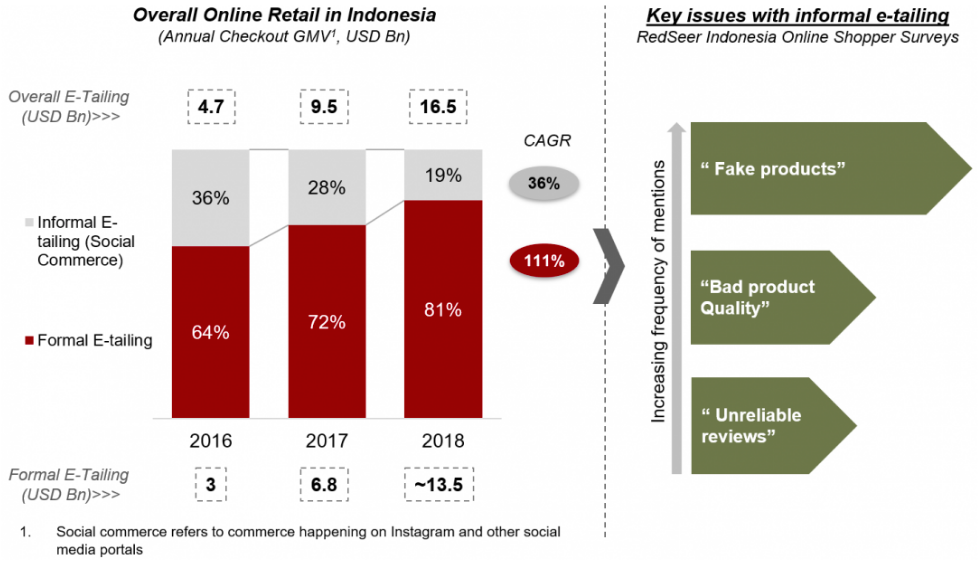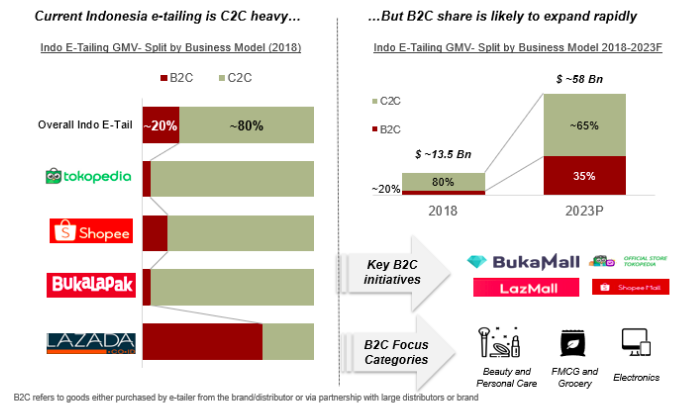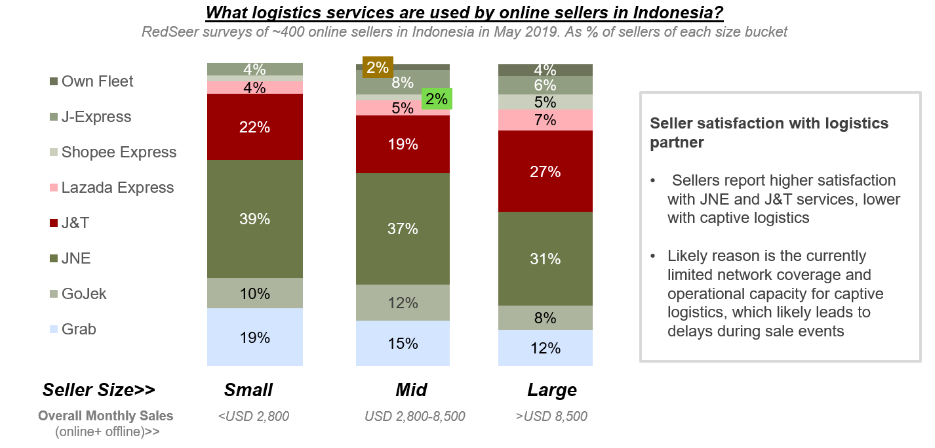There is plenty of room for growth in Indonesia’s e-commerce sector. It currently accounts for at least USD 8 billion of consumer spending a year, and is expected to grow eightfold by 2022.
RedSeer, an Indian research and advisory firm published four newsletters between June and July, unpacking in-house research to chart the development and potential of the e-commerce market in Indonesia. Here are three trends that KrASIA picked out to highlight.
The e-commerce sector is formalizing
According to RedSeer’s research, the market is undergoing a shift towards formal e-tailing.

Before e-commerce platforms like Bukalapak or Shopee became popular, Indonesians bought and sold merchandise on informal channels. It first started when internet users turned online discussion board Kaskus into a marketplace. After that, any platform that allows the user to post a photo and text together were used as trading sites. Social media platforms like Facebook, Twitter, Line, Whatsapp, and Instagram were especially popular.
Indonesians prefer to sell on informal channels as they do not have to pay commission or tax for these transactions. In 2016, social commerce made up 36% of online retail in the country. It fell to just 19% in 2018 due to reasons such as the ubiquity of knockoffs on informal sales channels, poor quality of goods, and unreliable reviews.
Concurrently, formal e-tailing has been becoming more popular. The market grew from 64% in 2016 to 81% in 2018, generating about USD 13.5 billion in revenue. RedSeer predicts that the growth will continue, hitting USD 21 billion in 2019 and USD 58 billion by 2023.
Indonesian sellers are leaving their social media platforms behind and shifting their businesses to more formal channels.
Another reason fueling this growth is the proliferation of business-to-consumers (B2C) platforms.
Aside from social media, a good portion of informal e-commerce transactions take place on consumer-to-consumer (C2C) channels.

RedSeer’s research reveals that about 80% of Indonesia’s e-commerce market is dominated by C2C players, with the four biggest portals being Shopee, Bukalapak, Tokopedia, and Lazada.
However, B2C’s share of the market is expected to grow to reach approximately 35% by 2023 due to a change in the business models of e-commerce platforms. The four biggest players in Indonesia each have their B2C arm—BukaMall, Official Store Tokopedia, LazMall, and Shopee Mall.
Faster shipping is key to moving shoppers online
Indonesia has an online shopper base of 45 million people, but this is only about 25% of total internet users in the country. By polling 100 shoppers who don’t spend their money online, RedSeer found that in order for offline shoppers to make purchases online in the future, the speed of delivery is very important—more so than having offline touch points and stronger internet connectivity.
The research firm predicts that e-commerce players that focus on enabling fast delivery via supporting warehousing and logistics infrastructure are likely to drive fast adoption in future.
In-house logistics will drive e-tailer adoption
Another point that RedSeer highlighted in one of its newsletters is how in-house logistics is crucial in driving e-tailer adoption.

The delivery landscape is dominated by third-party logistics firms that account for 90% of the market share. There are two dominant players, J&T and JNE, although Grab and Gojek have significant market share too.
While three of the four biggest e-commerce platforms have captive logistics arms—Bukalapak does not have its own system—in-house logistics in general still takes up a meager percentage of the market. Nonetheless, it is expected to account for 40% of e-commerce deliveries by 2023.
RedSeer believes that a better delivery experience will motivate repeated purchases and convince shoppers to spend their cash online, thereby increasing adoption of e-commerce platforms.
